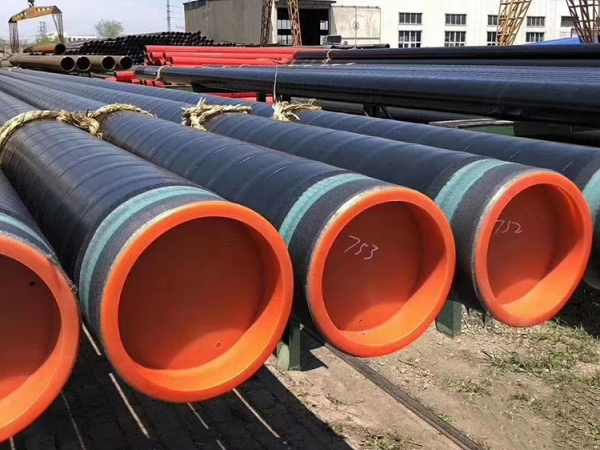Seamless carbon steel pipes are commonly used to transport a variety of fluids, including liquids and gases. In order to prevent corrosion of pipelines, appropriate anti-corrosion techniques are required. Today, USI Steel will give a brief introduction to the anti-corrosion of seamless carbon steel pipes.

Anti-Corrosion Technology Of Seamless Anti-Corrosion Steel Pipe:
The production process of seamless anti-corrosion steel pipes is relatively mature and can produce various anti-corrosion steel pipes. Among them, seamless anti-corrosion steel pipes have outstanding performance advantages. The equipment commonly used in the production of seamless anti-corrosion steel pipes includes steel pipe buffer platforms, pipe transfer devices, tractors, pipe penetration machinery, high-pressure gun generators, repair platforms, conveyor lines, steel pipe preheating furnaces, shot blasting hosts and other equipment. Seamless anti-corrosion steel pipes should be used on the inspection bench and return lines of unqualified steel pipes in tests. The application of these not only obtains good insulated steel pipes, but the product quality has also been strictly inspected.
The specific production process of seamless anti-corrosion steel pipes (ASTM A106) is to first inspect the seamless anti-corrosion steel pipes, and then inspect the steel pipes under various conditions to make them meet the conditions for making seamless anti-corrosion steel pipes. Check whether the steel pipe is corroded, and check and remove rust on the steel pipe. The next step is to put the rust-removed and anti-corrosion steel pipe into a polyethylene sleeve for pipe forming. Then, once the head is repaired, polyurethane foam is injected into it, filling the gap enough so that it's completely filled. Inspect anti-corrosion steel pipes and inspect finished seamless anti-corrosion steel pipes.
Seamless Anti-Corrosion Steel Pipe Anti-Corrosion Layer Material:
(1) Excellent bonding strength, aging resistance, and chemical stability;
(2) Advanced construction technology;
(3) The location and topography of the pipeline;
(4) Through soil or backfill;
(5) Operating temperature and ambient temperature of the pipeline system during construction management;
(6) Loading and unloading requirements and storage conditions of seamless anti-corrosion steel pipes;
(7) Anti-corrosion coating costs, including materials, coatings, maintenance and damage protection costs.
The selection of appropriate anti-corrosion technology depends on the purpose of the pipeline, environmental conditions and conveying media. When designing and manufacturing seamless carbon steel pipes, appropriate anti-corrosion measures are usually selected based on these factors to ensure the long-term reliability and safety of the pipeline. At the same time, regular maintenance and monitoring are key parts of ensuring that anti-corrosion measures are effective.